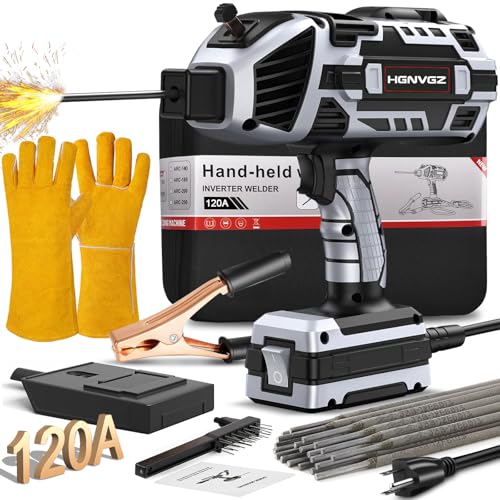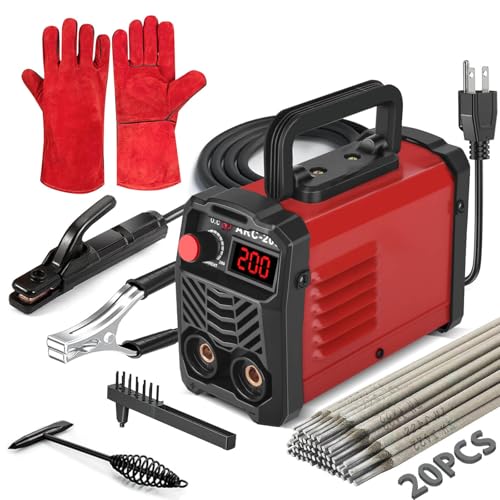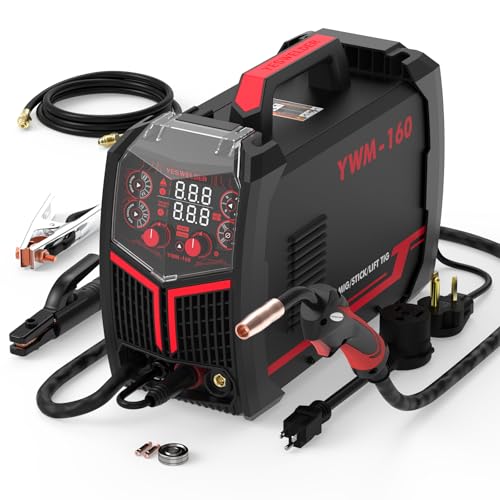Electric outboard motors are changing boating for the better. They offer a clean, modern way to enjoy the water. These motors use clean power, making them a great choice for eco-friendly boaters.
They are becoming more popular as people want to reduce their environmental impact. Electric outboard motors don’t produce harmful emissions like traditional engines do.
Better battery technology, like the Pure Battery Pack, makes these motors even better. They have a high voltage and capacity, making them powerful and efficient. This means boaters can have a great time on the water while helping the planet.
These motors are also quieter and better for the environment. They’re a smart choice for those who want to enjoy boating in a more sustainable way.
Introduction to Electric Outboard Motors
Electric outboard motors are changing the world of boating. They move us away from old gas engines to cleaner electric ones. The idea of electric boats started a long time ago, like at the 1893 Chicago World Columbian Exposition. There, over a million people rode electric boats made by The Electric Launch Company (Elco).
These motors bring big benefits for boating’s future. They are much quieter than gas engines, making them half as loud at cruising speed. At slow speeds, they’re almost silent. This makes boating better for everyone and for marine life too.
Electric outboard motors also have fewer parts than gas engines. This makes them more reliable and easier to maintain. Plus, they don’t pollute, helping the environment. This fits well with the need for green options.
These motors come in many power levels, from 3–5HP to over 50HP. This means they work for all kinds of boats and needs. They’re also good for both fresh and saltwater, making them very versatile.
Advantages of Electric Outboard Motors
Electric outboard motors are great for those who care about the environment and want to save money. They are quiet, clean, and easy to maintain. This makes boating better for everyone.
Clean and Quiet Operation
Electric outboard motors are known for their clean and quiet operation. They don’t produce harmful emissions like gas engines do. This means cleaner air and less pollution.
They also don’t make loud noises like gas engines. This makes them perfect for places with lots of wildlife.
Zero-Emission Boating Benefits
More people are choosing zero-emission boating for its environmental benefits. Electric motors are a good choice for both small and big boats. They save a lot of emissions in just six months.
They also don’t spill oil into the water, keeping our oceans clean. This is good for marine life and future generations.
Maintenance-Free Experience
Electric outboard motors are easy to take care of and last a long time. They have fewer parts than gas engines, so they need less maintenance. This means less money spent on repairs and fewer problems.
They don’t need oil changes or tune-ups as often. This saves time and makes owning a boat more enjoyable.
| Feature | Electric Outboard Motors | Gas Outboard Motors |
|---|---|---|
| Emissions | No exhaust emissions | High emissions (up to 10,000 lbs/year) |
| Noise Level | Quiet | Loud |
| Maintenance Needs | Minimal | High |
| Operating Costs | Lower (electricity is cheaper) | Higher (gasoline/diesel costs) |
How Electric Outboard Motors Work
Electric outboard motors are efficient and powerful. They use electric power instead of fuel. This makes them good for the environment and performs well.
These motors have advanced technology. They use battery power for great performance. This design is innovative.
Understanding Marine Propulsion
Electric outboard motors use brushless technology. This means no brushes, less friction, and longer life. They work better than gas motors, with a 30% boost in power.
They also pollute less. This makes boating cleaner. It’s good for the water and air.
The Role of Battery Technology
Battery technology is key for electric outboard motors. Lithium-ion batteries are used because they’re light and powerful. They make the motor efficient and quiet, with noise levels from 30 to 60 decibels.
They’re twice as powerful as lead-acid batteries. More charging spots will make electric boats easier to use. This will help more people choose electric propulsion.
| Feature | Electric Outboard Motors | Gasoline Outboard Motors |
|---|---|---|
| Fuel Efficiency | Higher efficiency and lower operating costs | Less efficient, higher fuel costs |
| Maintenance | Simpler maintenance schedule, minimal upkeep required | Regular maintenance needed, higher costs |
| Lifetime | Tens of thousands of hours | 1,500 to 5,000 hours |
| Emissions | Zero direct emissions | Significant emissions contributing to pollution |
| Noise Level | 30 to 60 decibels | Higher noise levels |
Types of Electric Outboard Motors
Electric outboard motors come in many models. They fit different power levels for various boating needs. Brands like Mitek, e’dyn, and Vetus offer impressive electric motors. Each is made to be efficient and perform well.
Comparison of Engine Power Levels
There’s a wide range of power levels in electric outboard motors. This means you can find the perfect match for your boat. Below is a table showing some top models and their power:
| Brand | Model | Power Output | Efficiency |
|---|---|---|---|
| Mitek | Various models | 2.6 HP, 15 HP, 20 HP | Above 90% |
| e’dyn | New Line | 2 kW to 11 kW | N/A |
| Vetus | E-POD | N/A | Up to 95% |
| Seadrive | Steerable Pod Unit | N/A | N/A |
| ePropulsion | Spirit 1.0 EVO | 1 kW | N/A |
Applications for Different Boating Needs
Electric outboard motors fit various boating needs. Light-duty models are great for small boats and fun activities. But, for fishing and cruising, you’ll need more power. Here are some uses:
- Fishing: Lower power motors are perfect for fishing. They’re quiet, which helps attract fish.
- Cruising: Medium power motors offer enough thrust for smooth sailing on big waters.
- Leisure Activities: Light motors make handling easy for fun trips on lakes and rivers.
Choosing the right electric outboard motor depends on power level and your boating needs. This ensures a great experience on the water.
Key Features of Modern Electric Outboard Motors
Modern electric outboard motors have features that boost performance and user experience. These updates are key for boaters wanting a smooth, eco-friendly ride on the water.
Advanced Control Systems
These motors use advanced control systems for better efficiency. They come with digital displays that show speed, battery life, and performance stats in real-time. This info helps users fine-tune their boating experience.
Some models also connect to smartphones. This gives users more control and convenience over their motors.
Water Resistance and Durability
Durability and water resistance are vital for these motors. Many have high IPX ratings, like IPX7, for use in tough marine settings. This protection keeps the motor safe from saltwater or freshwater damage.
| Feature | Electric Outboard Motors | Gas Outboard Motors |
|---|---|---|
| Noise Level | Quieter operation | Louder, requires maintenance |
| Emissions | Zero emissions | Polluting |
| Maintenance | Low due to fewer parts | Higher due to many moving components |
| Durability | High water resistance (IPX7 or higher) | Standard, varies by model |
| Initial Cost | Generally higher | Generally lower |
| Longevity | Longer lifespan than gas engines | Shorter lifespan generally |
Battery-Powered Boats
The world of battery-powered boats has seen big changes thanks to lithium-ion marine motors. These motors offer great performance, last a long time, and work well for many marine needs. It’s key to know about their energy efficiency and range to get the most out of boating.
Introduction to Lithium-Ion Marine Motors
Lithium-ion marine motors have changed how boats run. They are lighter and more efficient than old power sources. For example, Evoy® Outboard Motor Systems are perfect for boats 15 to 30 feet long. They have a sleek design that boosts performance.
These systems come with battery packs in 63, 126, or 189 kWh. They meet different needs based on the boat’s size and how it’s used. Evoy motors can go up to 25 nautical miles at cruising speeds and 60 nautical miles at slow speeds.
Energy Efficiency and Range Considerations
Lithium-ion marine motors are very energy efficient. This means you can go longer on a single charge. The batteries last up to 3000 charging cycles at 70% depth of discharge, keeping performance steady over time.
The design of the boat and how fast you go affect the range of battery-powered boats. At slow speeds, some electric boats can go 50 to 100 nautical miles. This shows how well they work with efficient battery tech.
Choosing the right charging setup is key to keeping your boat running well. For example, the Breeze system charges at 6 kW, while the Storm system can charge up to 40 kW. This makes it quicker to recharge the batteries.
| Feature | Details |
|---|---|
| Ideal Boat Size (Single Installation) | 15 to 25 ft |
| Ideal Boat Size (Double Installation) | 23 to 30 ft |
| Typical Range at 20-35 Knots | 20-25 nautical miles |
| Extended Range at 5 Knots | 40-60 nautical miles |
| Battery Pack Options | 63, 126, or 189 kWh |
| Design Life of Batteries | 3000 charging cycles at 70% DOD |
| Charging Capacity | 6 kW (Breeze), 20 kW (Storm) |
| Battery Waterproofing | IP67 |
Quiet Marine Engines and Their Impact
The rise of electric outboard motors is changing the marine industry. They are quiet, which makes the water better for everyone. This quietness also helps marine life and supports conservation efforts.
Electric outboards don’t pollute like traditional engines do. They don’t release harmful carbon emissions into the water. This makes them great for the environment. Plus, they save money in the long run because they need less maintenance.
Last year, electric outboard sales went up by 4%, says Boating Industry Magazine. This shows more people want to use the ocean in a way that’s good for it. They want to enjoy boating without harming the environment.
Electric motors work well with solar panels, making boating clean and green. Hybrid motors, which use both electric and fuel, are also becoming popular. They help reduce emissions and are very efficient. This makes electric outboards a smart choice for boaters today.
Sustainable Watercraft: A Growing Trend
The shift towards sustainable watercraft is changing the boating world. Many boat owners are choosing to add electric motors to their boats. This choice helps them keep their boats while making them greener.
Using electric motors cuts down on emissions. It also makes boating quieter and cleaner.
Integrating Electric Motors in Existing Boats
Adding electric motors to boats has many benefits. Boaters can pick from different power levels, from under 25kW to 50-150 kW. This lets them find the perfect motor for their needs.
This customization makes sustainable boats more appealing. It also helps move towards a greener boating culture.
Eco-Friendly Boating Solutions
New eco-friendly boating solutions aim to lessen the environmental harm of boating. Technologies like battery-powered motors and solar energy are being developed. Companies like Torqeedo and ePropulsion are leading the way.
These innovations are making boating cleaner. As more people choose sustainable options, the electric outboard engine market is growing fast. This shows a big commitment to green boating.
Charging Electric Outboard Motors
Charging electric outboard motors is key to keeping them running well on the water. There are many charging stations to meet different needs. You can find everything from simple household outlets to special marina connections. Each one helps make boating smoother.
Types of Charging Stations
Boaters have several charging station options:
- Standard Household Outlets: A great choice for charging at home, using common household voltage.
- Marina Dock Charging: Marinas have special dock stations for faster, higher-amp charging.
- Portable Charging Solutions: Perfect for quick charges anywhere, these small systems are super convenient.
Convenience of Home and Dock Charging
Home and dock charging make boating more enjoyable. With home charging, your motors are always ready for a trip. Dock charging lets you quickly top up, so you spend more time on the water. This ease makes electric outboard motors very appealing.
| Charging Solution | Typical Voltage | Charging Time |
|---|---|---|
| Standard Household Outlet | 120V AC | Varies based on battery capacity |
| Marina Dock Charging | 240V AC | Shorter, 3.5 to 10.5 hours depending on the battery type |
| Portable Charging Solutions | Varies | Typically faster than standard options |
Performance Metrics of Electric Outboard Motors
Electric outboard motors are changing the game for boaters. They pack a lot of power and are way more efficient than gas motors. This makes them a top choice for many marine needs.
Power Equivalent to Gas Motors
Electric outboard motors can match the power of gas motors but use less energy. For example, a 4 HP gas outboard only gives 1 HP to the propeller. But, brands like Torqeedo use smart tech to turn battery power into more propulsive power. This means electric motors can be as good as or even better than gas engines.
Speed and Acceleration Comparisons
Electric motors are faster off the line than gas motors. They can deliver a lot of torque, which means quicker acceleration. Electric motors can be up to three times more efficient than gas motors in lower horsepower ranges. This makes boats like those from Alfastreet Marine fast and comfortable for passengers.
| Motor Type | HP Output | Propulsive Power (Effective HP) | Torque Delivery | Efficiency Factor |
|---|---|---|---|---|
| Petrol Outboard (4 HP) | 4 HP | 1 HP | Moderate | Standard |
| Torqeedo Electric Outboard | Equivalent to 5 HP | 5 HP | High | High |
Electric outboard motors are more than just eco-friendly. They also offer top-notch performance that can beat gas motors. This makes them a great choice for those who want to enjoy the water without harming the environment.
Cost Considerations for Electric Outboard Motors
Switching to electric outboard motors is more than just the upfront cost. It’s about the total cost over time, including both the initial investment and long-term savings. With new tech and eco-friendly options, it’s key to understand these costs for a smart choice.
Initial Investment vs Long-Term Savings
Electric outboard motors usually cost more at first than traditional engines. But, they save money in the long run. Fuel costs drop a lot with electric motors, saving you money on gas.
These motors also last longer, meaning you won’t need to replace them as often. This saves you money on repairs and replacements. Plus, they need less maintenance, adding to the savings. You can choose from different batteries like Lithium-Ion or Lead-Acid, each with its own price and performance.
For those who care about the environment, electric outboard motors are a great choice. They come with tax breaks, making them even more affordable. So, while they might cost more upfront, they offer big savings and help the planet in the long run.
Installation Process for Electric Outboard Motors
Installing electric outboard motors is key to greener boating. It boosts your boat’s performance and cuts down on environmental harm. A detailed guide helps boat owners prepare, position, and connect everything for a smooth install.
Step-by-Step Guide
Start by checking if your boat fits with electric outboard motors. Clear instructions are vital, as many have found success with them. You’ll need to wire, install batteries, and secure the motor on the transom.
Also, following ABYC standards makes boating safer. This reduces risks from propane systems.
What to Expect During Installation
Installing electric outboard motors usually takes a few hours. It depends on the job’s complexity and your knowledge of marine systems. Some prefer professional help, especially for retrofitting.
After installation, you’ll see better efficiency and lower upkeep costs. Plus, you’ll help the environment and enjoy smoother propulsion.



